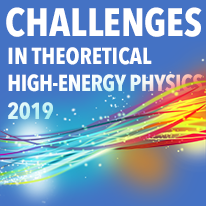Venue

Nordita, Stockholm, Sweden
Scope
Massive stars, almost always found in pairs, evolve and end their lives as extreme-gravity compact objects - white dwarfs, neutron stars and black holes. Binary stellar interactions and gravitational radiation drive these two objects together resulting in their mergers. Such mergers are widely accepted to give rise to a host of the most energetic transient events known in the Universe. For instance, supernova Ia are thermonuclear explosions that map out the acceleration of the expanding Universe, short gamma-ray bursts are cosmic lighthouses powered by relativistic jets, and neutron-star binary mergers could be responsible for producing most of the rare-earth elements in our Universe. Excitingly a suite of newly upgraded instruments have detected gravitational radiation in the past year (e.g., LIGO) or are poised to detect high-energy neutrinos (e.g., Antares, Icecube) from these compact object mergers. These measurements are providing key insights into the fundamental characteristics of the compact objects, such as their masses and intrinsic spins, and the complex physics driving their mergers, jets and accretion. Furthermore, new optical and radio facilities are able to measure these transients in ways that were not possible before and provide complementary information on their environments. However to date, our uncertainties in binary stellar evolution and compact object formation result in production rates of compact object mergers that vary by several orders of magnitude. By critically assessing binary stellar interactions and evolution, this program will bring together theorists, computational astrophysicists, observers, and instrumentalists for a period of four weeks. Our aim is to systematically connect the binary progenitors through the complex merger physics to the myriad of observed and predicted cosmic transient events. This multidisciplinary program is urgent since the maximum scientific return of these new observatories and instruments will rely on the program's deliverables. The timeliness of the program is further underlined as instruments, such as LIGO and Virgo, will constrain the rates of compact object mergers within the next five years.
Registration deadline: 01 March 2017
Format
The workshop will focus on the outcomes of white dwarf/neutron star/black hole binaries and the physics driving them:
| Week 1 (June 5-9th): | White dwarf-white dwarf binaries |
| Week 2 (June 12-16th): | Neutron star-neutron star, neutron star-black hole and black hole-black hole systems |
| Week 3 (June 19-22nd): | CONFERENCE on compact object mergers |
| Week 4 (June 26-30th): | White dwarf-black hole and white dwarf-neutron star systems |


